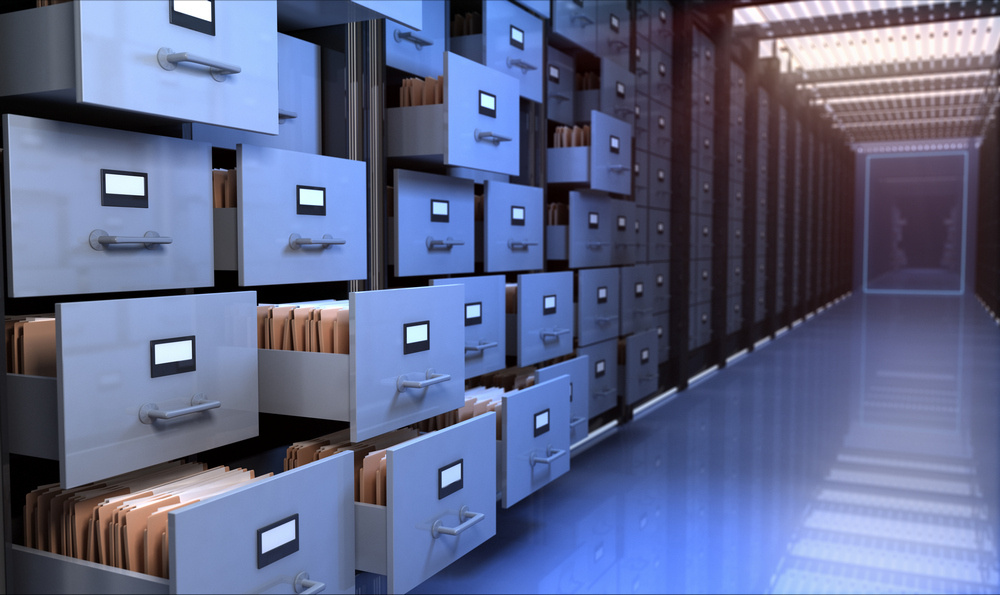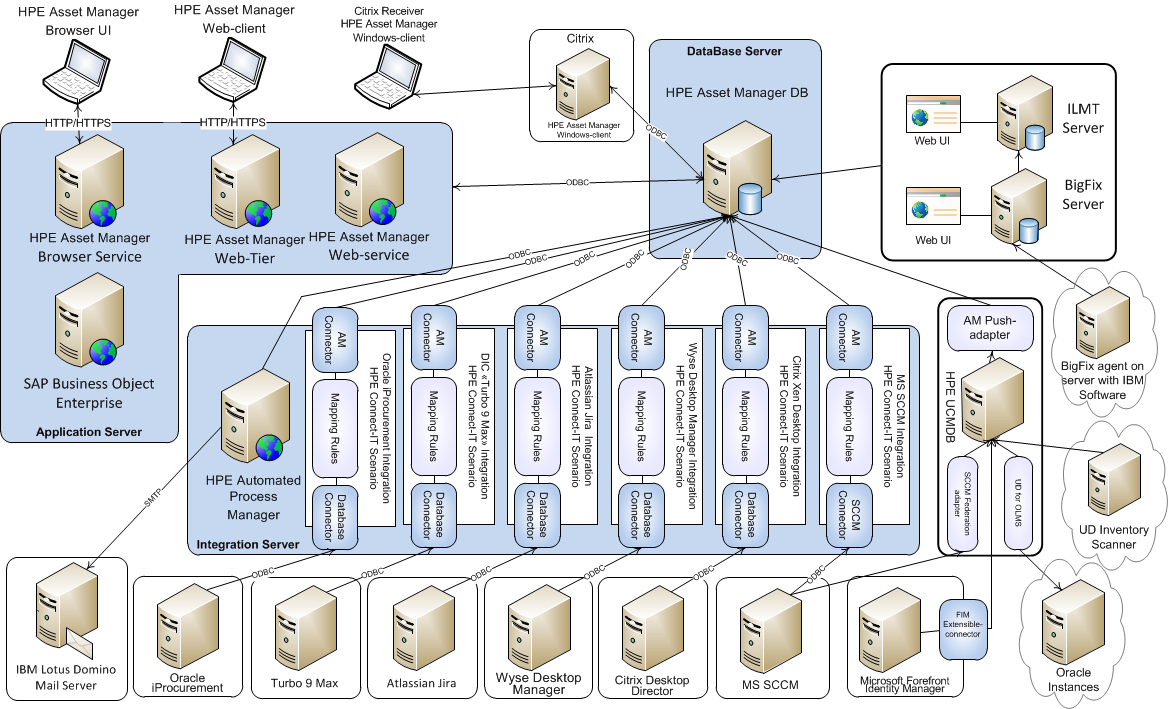Software Asset Management at Raiffeisenbank - process and result

At the end of September this year in Berlin, a competition of European projects for SAM - SAMS Europe Award 2017 will be held. We believe that our project deserves recognition, and therefore we have applied for participation in two categories: Overall Project / Strategy and Tool / Software . What is remarkable about our SAM system? The fact is that Raiffeisenbank has developed a special combination of software products, because of which we had to make many changes to the product we chose to manage software assets. Under the cut - a detailed story about this epic.
Moment of theory
Software Asset Management (SAM) is the process of accounting and managing software assets of a company. Any business is always interested in reducing costs. And with the growth of the company, its costs for software infrastructure also grow. What programs are purchased for the company? How many licenses do we have? How are they used? Do license restrictions comply with their actual use? What conditions are specified in software support contracts?
The larger the company, the more difficult it is to answer these and many other questions that regularly arise from the IT management, financial department and auditors. And this is not idle curiosity at all. If you have a complete understanding of the composition and nature of the use of all software copies, you can save on redundant functionality, abandon “extra” licenses, decide on the most appropriate licensing restrictions for your company, make sure that all applications are used as stated in the agreements and at the same time make sure that no pirated software is in there. By the way, the last two points can cause considerable fines for the company. Each vendor has its own peculiarities of licensing and support, with a variety of options. And when the number of licenses in a company amounts to thousands or tens of thousands, the problem of manual accounting and optimization of software infrastructure turns into a multi-week headache for entire departments — and this is not a one-off job. According to Gartner, in the first year after the introduction of SAM, 5-30% of the budget of the IT department is saved, and then about 5% each year. In large companies, in absolute terms, there is a round amount, not to mention the removal of legal risks in respect of compliance with licensing restrictions.
')
As we had
A modern bank is unthinkable without a diverse and developed software infrastructure. And even more so the bank is large, with a large number of branches scattered throughout the country. Until recently, all accounting for the software we used was manual. For each iteration, the registration of all copies of installed applications and verification of compliance of their use with license conditions took several weeks of uninterrupted labor for a pair of departments. Not too improved the situation and samopisnye tools for automation. The last straw that broke the patience of business and IT management was the next audit of the bank. No, no violations were identified, but collecting the necessary information in a short time required simply heroic efforts. So in our case, the decision to implement SAM was not made due to the detection of violations during the audit, and not from the desire to obtain immediate economic benefits, but from the need to optimize business processes, long-term optimization of IT costs and reduce possible risks.
We needed to automate the process so that the system would take into account the maximum number of copies of the software and the options of their licenses without the participation of people. Moreover, the accounting had to be end-to-end throughout the entire product life cycle, starting with the purchase plans and ending with the uninstallation. In addition to accounting, the system should allow managing assets, including cost planning, optimization of use and transfer to other platforms (many licensing conditions depend on this). In addition, support contracts were entrusted to the future product. This is one of the key items of software spending, so that optimization here could bring the greatest benefits. But in order to understand which contracts you could save on, you first had to get a complete picture of the payments. And in order to protect themselves from fines for delaying the extension of contracts, the system had to help people renew them in a timely manner.
It was obvious that we would not pull the solution to a problem of this scale on our own and within a reasonable time. The scope and complexity of the work were such that we needed a ready thought-out solution, and the integrator should have all the necessary experience to implement, rather than experimenting and gaining knowledge at our expense.
After a long analysis of the SAM-products market and negotiations with vendors, we settled on the HPE Asset Manager. Why on it? After all, the capabilities of Asset Manager are comparable with competitors, and the cost of an enterprise-solution cannot be called humane, even for a large bank. But on closer comparison, it turned out that at the cost of the Asset Manager it is at least comparable to the solutions of other vendors, if not cheaper, because we needed to register tens of thousands of software licenses used by the company. Equally important was the fact that HPE offered active implementation assistance. An additional advantage on the scale of the scales was the widest possibilities of Asset Manager for integration with already existing data sources of the bank, as well as the fact that for many years the CMDB from HPE - UCMDB has been a reliable source of data on the current operation status.

Next, we announced a tender and chose an integrator - I-Teco.
Began a difficult history of implementation. During the first year the following works were planned:
- Preliminary survey of infrastructure.
- Building a SAM process.
- Adaptation of existing bank processes (IT and not only).
- Direct implementation of Asset Manager.
- Integration with all sources of data on software assets.
- Registration of all Microsoft and Oracle products.
Despite all the advantages of Asset Manager, the use of its capabilities out of the box did not obscure all the features of solving our task of building a fully automated SAM system capable of taking into account information about the diversity of software used in the company. By deploying a test bench, we found out that, due to the peculiarities of the combination of software and hardware in the bank - for example, Oracle products deployed on the IBM Power Systems platform - Asset Manager out of the box (just like any other similar product) simply couldn’t correctly account for all licenses used in our bank. Significant changes needed to be made to Asset Manager - because we definitely did not want to get product introduction “casted” to an unsupported state, we wanted to exploit and maintain the “box” to always be able to use all the innovations and improvements of new software releases.
We must pay tribute to the contractor and the vendor - they did not try to approach the implementation of the project formally. We have never heard in response, "this is not in the TK, so I'm sorry." Experts from all three sides promptly discussed every problem that arose, developed a solution, and the HPE team made the necessary changes to their product - as the vendor shared our approach and also wanted not only in words, but in fact to make the product better and more interesting.
As a result, several dozen changes were made to Asset Manager and UCMDB, which thanks to our project became available to all users of these software products.
What is the result
Our SAM process is not an internal IT process, it covers “extraneous” departments of the bank (for example, accounting), we have combined data on operations, accounting, investments and operating expenses.
The system is based, of course, on the Asset Manager, and we assigned the data collection to the tools we already had.

The system in fully automatic mode is capable of:
- Find all applications installed on computers and servers of the bank. Even if someone takes an inappropriate initiative and sneaks in unauthorized software, we will find it before the auditors. IT staff are more attentive to choosing options when installing applications.
- Identify found. After indexing all the packages, applications and utilities, it is necessary to understand what exactly is installed here and how well it meets the requirements of the vendors.
- Keep records of acquired software. It is necessary not only to know what we bought, but also to have proof. If some subdivision or project needs additional computing power, then you can not invest in new hardware and licenses, but find and transfer unused resources. When preparing for the implementation of some projects, we have more clarity on the need to purchase new products and licenses. Pleasant bonus - increased IT responsiveness to business needs.
- Monitor license compliance. The most important thing in this whole venture with SAM. The rights to use the software are checked, any steps that imply changes in the use of licenses are agreed.
- Financial Accounting. Do not think about the value of assets can only afford a future bankrupt. All costs are accounted for in detail and distributed to business consumers. Budget planning has been simplified: how many licenses need to be bought in the next financial year, how much money should be allocated for technical support. Naturally, all data can be compared with information from previous years.
As mentioned at the beginning, our SAM implementation project is announced for the competition in two nominations. And we have high hopes of winning - most of the projects we considered in other organizations were simply deploying products out of the box, without any modifications. In our case, a fully automated solution was created that does not require human participation. Thanks to him, IT staff got rid of the license accounting routine, the process of planning future software costs became transparent, the management efficiency of the existing infrastructure was improved, and the risk of using unlicensed products was reduced.
Source: https://habr.com/ru/post/337280/
All Articles